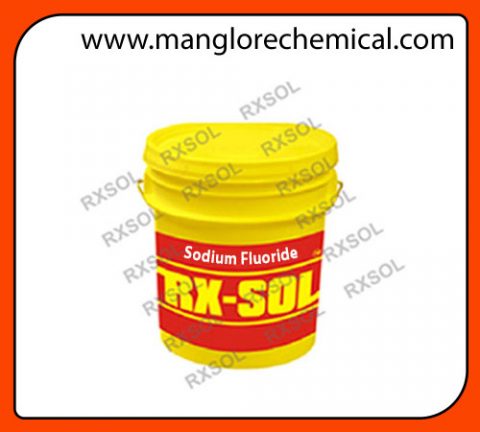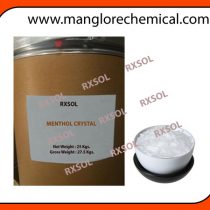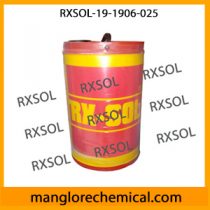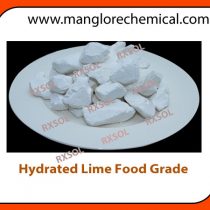Product Name
Sodium Fluoride
Part Number
RXSOL-19-8203-025
Company Details:
RX MARINE INTERNATIONAL
105, A wing , BSEL , TECH PARK.
VASHI ,NEW BOMBAY 400703 INDIA
Phone
+91 22 65113333 / 5555 / 9999
Fax
+91 22 2781 1318 :::AOH :0091 9821214367
Email
123@rxmarine.com
Website
http://www.rxmarine.com
Name of Substance
Cas Number
EC Number
Wight %
Sodium Fluoride
7681-49-4
231-667-8
100%
Signal Word
Danger
Hazard Statements
H301 Toxic if swallowed.
H315 Causes skin irritation.
H319 Causes serious eye irritation.
EUH032 Contact with acids liberates very toxic gas.
Precautionary statements – prevention
P280 Wear protective gloves.
Precautionary statements response
P302 + P352 IF ON SKIN: Wash with plenty of soap and water.
P305 + P351 + P338 IF IN EYES: Rinse cautiously with water fo several minutes. Remove contact lenses, if present and easy to do. Continue rinsing.
P308 + P310 IF exposed or concerned: immediately call a POISON CENTER or doctor/ physician.
Eye Contact
Check for and remove any contact lenses. In case of contact, immediately flush eyes with plenty of water for at least 15 minutes. Cold water may be used. Get medical attention.
Skin Contact
In case of contact, immediately flushes skin with plenty of water for at least 15 minutes while removing contaminated clothing and shoes. Cover the irritated skin with an emollient. Cold water may be used.Wash clothing before reuse. Thoroughly clean shoes before reuse. Get medical attention.
Inhalation:
Move to fresh air. If breathing is difficult, give oxygen. Get medical attention immediately if symptoms occur.
Ingestion:
Do not induce vomiting. Obtain medical attention.If vomiting occurs, lean patient forward or place on left side (head-down position, if possible) to maintain an open airway and prevent aspiration.
Notes to Physician
Treat symptomatically
Flammability
Not Flammable
Flash Point
Not Applicable
Suitable extinguishing media
Use extinguishing measures that are appropriate to local circumstances and the surrounding environment.
Hazardous combustion products
Not available
Protective Equipment
Use personal protective equipment.
Specific Hazards Arising from the Chemical
Not combustible. Ambient fire may liberate hazardous vapours. Fire may cause evolution of: Hydrogen fluoride
Special protective equipment for firefighters
Stay in danger area only with self-contained breathing apparatus. Prevent skin contact by keeping a safe distance or by wearing suitable protective clothing.
Spillage
Use appropriate tools to put the spilled solid in a convenient waste disposal container.Poisonous solid. Stop leak if without risk. Do not get water inside container. Do not touch spilled material. Use water spray to reduce vapors. Prevent entry into sewers, basements or confined areas; dike if needed.
Personal Protection
Advice for non-emergency personnel: Avoid inhalation of dusts. Evacuate the danger area, observe emergency procedures, consult an expert. Advice for emergency responders: Protective equipment see section 8.
Enviromental Precaution
Do not let product enter drains.
Methods and materials for
containment and cleaning
Cover drains. Collect, bind, and pump off spills. Observe possible material restrictions (see sections 7 and 10). Take up dry. Dispose of properly. Clean up the affected area. Avoid generation of dust
Handling
Do not ingest. Do not breathe dust. In case of insufficient ventilation, wear suitable respiratory equipment. If ingested, seek medical advice immediately and show the container or the label. Avoid contact with skin and eyes. Keep away from incompatibles such as oxidizing agents, metals, acids, alkalis.
Storage
Tightly closed. Dry. Keep in a well-ventilated place. Keep locked up or in an area accessible only to qualified or authorised persons.Protect from moisture. Store away from foodstuffs
Advice on general occupational hygiene
Advice on safe handling Observe label precautions. Change contaminated clothing. Wash hands after working with substance.
Engineering Control
Use process enclosures, local exhaust ventilation, or other engineering controls to keep airborne levels below recommended exposure limits. If user operations generate dust, fume or mist, use ventilation to keep exposure to airborne contaminants below the exposure limit.
Personal Protection
Eye/face Protection: Wear appropriate protective eyeglasses or chemical safety goggles as described by OSHA's eye and face protection regulations in 29 CFR 1910.133 or European Standard EN166.
Skin and body protection: Wear appropriate protective gloves and clothing to prevent skin exposure. Respiratory Protection : Follow the OSHA respirator regulations found in 29 CFR 1910.134 or European Standard EN 149. Use a NIOSH/MSHA or European Standard EN 149 approved respirator exposure limits are exceeded or if irritation or other symptoms are experienced.
Other Protection Measure
Handle in accordance with good industrial hygiene and safety practice.
Exposure Limit
TWA: 2.5 (mg/m3) from NIOSH Consult local authorities for acceptable exposure limits
Gloves Suit
Form
Crystal / Solid
Colour
White
Odour
Odourless
Odor Threshold
Not Applicable
pH
10.2 at 40 g/l 20 °C
Melting Point
996 °C (decomposition)
Boiling Point
1,695 °C at 1,013 hPa
Flash Point
Not Applicable
Evaporation Rate
Not Applicable
Flammability (solid, gas)
No Data Available
Explosive limits
No Data Available
Vapour pressure
1 hPa at 1,077 °C
Vapour Density
No information available.
Specific Gravity
2.8 g/cm3 at 20 °C
Partition coefficient
No data available
Explosive properties
None
Solubility
Soluble in water 50 g/l at 20 °C
Ignition temperature
No information available.
Oxidizing properties
None
Reactivity
Reacts with acids..
Stability
The product is chemically stable under standard ambient conditions.
Possibility of hazardous reactions
Generates dangerous gases or fumes in contact with: acids Possible formation of : Hydrogen Fluoride.
Conditions to avoid
Strong Heating
Incompatible materials
Reactive with oxidizing agents, metals, acids, alkalis.
Hazardous Polymerization
Hazardous polymerization does not occur.
Rout Of Entry
Inhalation. Ingestion.
Toxicity to Animal
Acute oral toxicity (LD50): 52 mg/kg [Rat].
Toxic Effects on Human
May cause damage to the following organs: upper respiratory tract. Other Toxic Effects on Humans: Hazardous in case of skin contact (irritant, sensitizer), of ingestion, of inhalation (lung irritant, lung sensitizer).
Special Remarks on other Toxi Effects on Humans:
Acute Potential Health Effects: Skin: Causes skin irritation. May cause skin sensitization, an allergic reation, which becomes evident upon re-exposure to this material. Eyes: Causes eye irritation. Ingestion: Causes gastrointestinal (digestive) tract irritation with nausea, vomiting, and diarrhea. May be harmful if swallowed. Inhalation: Causes respiratory tract irritation. May cause chemical pneumonitis and pulmonary edema, inflammation, edema of bronchi and larynx. Chronic Potential Health Effects: Repeated or prolonged skin exposure may cause allergic reactions in sensitive individuals. Repeated or prolonged exposure by inhalation may affect respiration and metabolism.
Further Information
After absorption: We have no description of any toxic symptoms. Other dangerous properties can not be excluded. Handle in accordance with good industrial hygiene and safety practice.
Systemic effects:
Cardiac irregularities, respiratory arrest, Nausea, Unconsciousness, death The following applies to soluble inorganic fluorides in general: may cause irritations to burns in contact with eyes, skin, mucous membranes. Systemic effect: drop in blood calcium level, agitation, spasms, cardiovascular disorders, CNS disorders. Handle in accordance with good industrial hygiene and safety practice
Eco Toxicity
Toxicity to fish : LC50 Gambusia affinis (Mosquito fish): 925 mg/l; 96 h (IUCLID). Toxicity to daphnia and other aquatic invertebrates EC50 Daphnia magna (Water flea): 338 mg/l; 48 h (IUCLID)
COD and BOD 5
Not Available
Products Biodegradation:
Possibly hazardous short term degradation products are not likely. However, long term degradation products may arise.
Mobility in soil
No Information available
Results of PBT and vPvB assessment
PBT/vPvB assessment not available as chemical safety assessment not required/not conducted
Other adverse effects
Hazard for drinking water supplies. Discharge into the environment must be avoided.
Waste treatment Method
Waste material must be disposed of in accordance with the national and local regulations. Leave chemicals in original containers. No mixing with other waste. Handle uncleaned containers like the product itself.
DOT
UN Number
UN 1690
Proper shipping name
SODIUM FLUORIDE, SOLID
Hazard Class
6.1
Packing group
III
TDG
UN Number
UN 1690
Proper shipping name
SODIUM FLUORIDE, SOLID
Hazard Class
6.1
Packing group
III
IATA
UN Number
UN 1690
Proper shipping name
SODIUM FLUORIDE, SOLID
Hazard Class
6.1
Packing group
III
IMDG/IMO
UN Number
UN 1690
Proper shipping name
SODIUM FLUORIDE, SOLID
Hazard Class
6.1
Packing group
III
Fedral and State Regulation
California prop. 65: This product contains the following ingredients for which the State of California has found to cause birth defects which would require a warning under the statute: No products were found. California prop. 65: This product contains the following ingredients for which the State of California has found to cause cancer which would require a warning under the statute: No products were found. Connecticut hazardous material survey.: Sodium fluoride Illinois chemical safety act: Sodium fluoride New York release reporting list: Sodium fluoride Rhode Island RTK hazardous substances: Sodium fluoride Pennsylvania RTK: Sodium fluoride Massachusetts RTK: Sodium fluoride Massachusetts spill list: Sodium fluoride New Jersey: Sodium fluoride New Jersey spill list: Sodium fluoride Louisiana spill reporting: Sodium fluoride.
Other Regulation
OSHA: Hazardous by definition of Hazard Communication Standard (29 CFR 1910.1200). EINECS: This product is on the European Inventory of Existing Commercial Chemical Substances.
WHMIS (Canada)
CLASS D-1B: Material causing immediate and serious toxic effects (TOXIC). CLASS D-2B: Material causing other toxic effects (TOXIC).
DSCL (EEC)
R25- Toxic if swallowed. R32- Contact with acids liberates very toxic gas. R36/38- Irritating to eyes and skin. S22- Do not breathe dust. S36- Wear suitable protective clothing. S45- In case of accident or if you feel unwell, seek medical advice immediately (show the label where possible).
HMIS
Health Hazard
: 2
Fire Hazard
: 0
Reactivity
: 0
Personal Protection
: E
Fire :
Health Hazard
: 3
Fire Hazard
: 0
Reactivity
: 0
Specific Hazard
:
Other Information
The information above is believed to be accurate and represents the best information currently available to us. However, we make no warranty of merchantability or any other warranty, express or implied, with respect to such information, and weassume no liability resulting from its use. Users should make their own investigations to determine the suitability of the information for their particular purposes. In no event shall be liable for any claims, losses, or damages of any third party or for lost profits or any special, indirect, incidental, consequential or exemplary damages, howsoever arising, even if Rx Marine International has been advised of the possibility of such damages.
|







Reviews
There are no reviews yet.